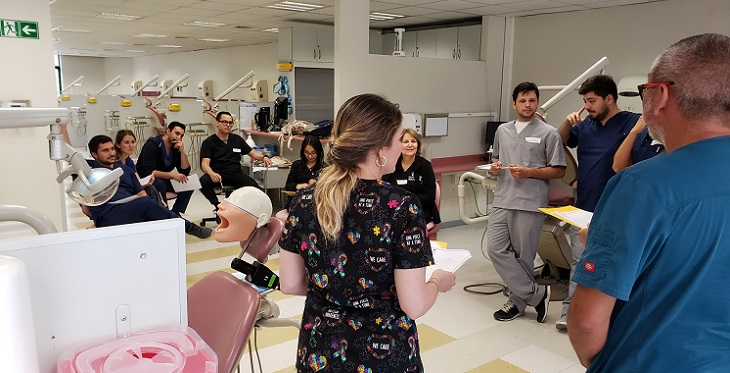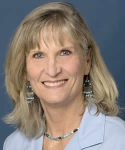Phase One: Using Simulation Labs to Teach Future Telehealth Providers
For 15 years, I was a home hospice nurse who went out on emergency nighttime visits to patients who were experiencing symptoms that terrified their family. The travel distance added to the anxiety and suffering of family and patients. I always thought that just because a family chooses to live in a rural area, they should not have to accept suffering as “the price they have to pay.”
Since then, I have focused on enabling the provision of healthcare services to patients who choose to live in the beauty of a rural environment. Using telehealth technology to rapidly view, assess and improve a patient’s situation has been foremost in my program of research.
I know I do not have to describe the explosion of telehealth during the last 15 years to readers of this blog. In my telehealth experience, I have gone from home hospice organizations, thinking that I was suggesting a cold and unfeeling method of providing end-of-life care, to a Global University interest in me sharing my telehealth expertise as an international Fulbright Specialist.
In December 2018, I was invited to spend 10 days at the Universidad Mayor (UM) in Chile, South America. The purpose of my visit was to investigate the use of simulation to teach telehealth at the university’s science campuses. The UM is a private university with 11 campuses in Santiago and one in Temuco. Despite the fact that UM was founded in 1988, only 30 years ago, there are currently 20,000 students enrolled in seven academic programs. It was clear to me that the reason behind the rapid, yet well-planned, expansion is the attention given to providing students with education for the future, especially in the areas of healthcare. The Universidad is intentional and does not let time waste!
Thanks to a combined effort between UM administrators and Arizona Telemedicine Program initiatives, by January 6, 2019, I was in Santiago. Chile is a very long country, stretching 2,670 miles but only 217 miles at its widest point. The entire country covers almost 300,000 square miles. Forty-one percent of the population lives in three large cities, resulting in 10 million people living in rural areas.
I visited two campuses – Alameda and Huechuraba – in Santiago, Chile’s capitol, during my first five days in the country. Both campuses have state-of-the-art simulation mannequins for training. At the Alameda Campus, I observed healthcare simulation training for dental surgery and odontology, the scientific study of the structure and diseases of teeth. At the Huechuraba campus, I observed medical, nursing and obstetric students all learning together, using the simulation mannequin to give birth as the focus for their collaboration.
My research program examines human factors that improve the use of telehealth. Effective communication is a critical variable. The technology can be of the best quality possible, but if the communication between the sender and the receiver is not effective, the outcome will not be optimal. With each new technology addition to our healthcare system, we should expect improvement, not merely substitution for existing processes. Using the “seven Cs” of effective communication: being courteous, clear, correct, complete, concrete, concise, and considerate, contributes to teaching skills when in person. However, when instructing remotely, due to limitations of other senses -- smell, 360-degree visualization and touch – verbal attention to “the seven C’s” of effective communication becomes critical. Simulation is a great way to allow healthcare providers to learn skills without risk to the patient. This exciting collaboration with the forward thinking Universidad Mayor will utilize existing simulation technology to teach healthcare providers of the future how to communicate effectively. Use of simulation labs to teach telehealth is Phase One of my collaboration with Universidad Mayor in Chile, South America. Coming up: Phase Two.

